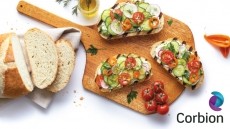Special Edition: Dry food packaging
Reclosability ensures flexibles punch above their weight
The reclosability benefits of flexibles along with reduction in packaging weight, and the good product quantity to packaging ratio are the main drivers for makers of dry foods such as snacks, nuts and coffee opting for pouch and bag type formats, commented Esther Palevsky, an analyst with Freedonia market research group.
Citing expected growth figures in the US of 2.1 per cent for flexible packaging to 2015 compared to the 1 per cent predicted for rigid pack types, Palevsky predicts that bags and pouches will have a 74 per cent share of the US snack food market in 2015.
Benjamin Punchard, head of packaging research at Euromonitor International, echoes Palevsky’s remarks on the reclosability functionality of flexibles being their stand-out quality for dry food manufacturers.
“Whilst this aspect [reclosability] has been addressed in the past through sticky tabs that enable the consumer to stick down the open end of a flexible pack, increasingly brand owners are offering zip-loc closures on flexible plastic packaging and on stand up pouches.
This is more prevalent in higher margin categories such as dairy products. However, consumer recognition of this closure type is now growing and so the closure will be seen more and more on cheaper products,” he said.
Palevsky also points out that international retailer giant Walmart’s scorecard has been an additional factor in the growth of flexibles in dry foods, due to the sustainability card's emphasis on source reduction in packaging tonnage.
The lightweight nature of flexible laminates and multi-layer substrates compared to rigid packaging including metal, rigid PET and glass containers has ensured increased demand by dry food producers, observed Palevsky.
The analyst notes, though, that while glass, metal and carton board have a well established recycling infrastructure, end-of-life options for multilayer flexible packaging are limited.
Coffee
A big pack type switch from rigid to flexible, continued Punchard, has been seen in the move from glass to pouches with instant coffee.
First tried by Kenco in 2009 and strongly positioned as an environmentally better pack (with ’97 per cent less packaging weight’ clearly printed on the first pouches) the success of this format lead to Nescafé following suit with its own instant coffee refill pouch almost exactly a year later in November of 2010.
‘When it comes to coffee beans and ground coffee, flexible aluminium/plastic remains the most widely used pack type in 2010,” claimed Euromonitor analyst Karine Dussimon in a blog on the topic.
But with the price of aluminium laminates and technological progress in the barrier properties of flexible plastic, she questions the future of aluminium in this category.
Breakfast cereals
In terms of breakfast cereals, though, branded varieties, in the main, “have stuck with the box,” despite issues of contamination through use of recycled board material having recently hit the news, commented Punchard.
“These main brands recognise the importance of the convenience provided by the box and the branding and on-shelf impact it provides,” remarked the packaging specialist.
And Freedonia’s Palevsky argues that as the breakfast cereal market is relatively mature, manufacturers are unwilling to invest in new machinery to allow a switch to flexible packs.
Punchard does note UK retail chain Sainsbury’s decision to remove their 100 per cent recyclable box for their economy range of own brand cereals in 2009, with the store saying the move to bag only had sound environmental credentials as it would reduce packaging in its basics range by more than 165 tonnes a year.
Kellogg argued that such a move would result in more waste as its tests had shown that putting cereal in a bag damaged the product and would result in more food waste due to breakages in the flakes in transit, on shelf and in the home.
"A box and a thin bag are fully recyclable – bags only use more plastic and is much thicker and harder to recycle. You also need a lot more packaging in transit to limit damage,” a spokesperson for Kellogg told BrandRepublic.com last year.












